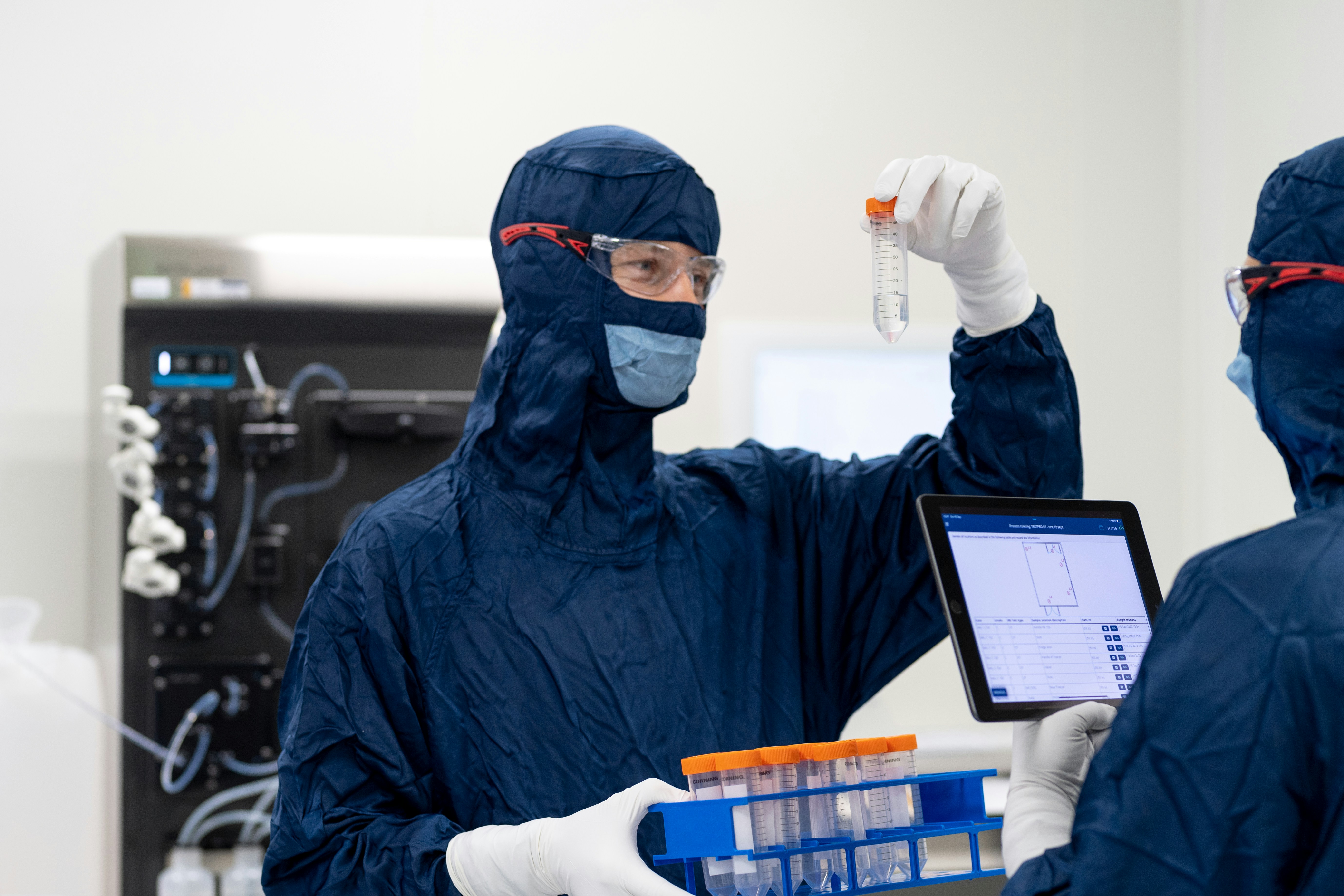Cleanrooms play a critical role in the healthcare industry, ensuring that medical devices, pharmaceuticals, and other healthcare products are safe and effective for patients. Cleanrooms have become increasingly important in healthcare delivery, particularly as the need for sterile and contaminant-free environments has grown.
The article explores the key benefits of cleanrooms in healthcare and their impact on patient outcomes. It also discusses how they contribute to improving healthcare delivery and patient safety.
Table of Contents
1. Cleanrooms Protect Patients from Harmful Microbes
Cleanrooms are designed to control and reduce the levels of airborne particles and microbes in the environment. It is particularly important in healthcare settings where patients are vulnerable to infections and diseases. By maintaining strict cleanliness standards, cleanrooms help to protect patients from harmful microbes and other contaminants.
In healthcare, cleanrooms are used in various settings, such as surgical suites, pharmaceutical production, and medical device manufacturing. For example, in surgical suites, using cleanrooms helps reduce the risk of infections by ensuring that the air is free from harmful particles and microbes. It is achieved by controlling airflow, temperature, and humidity levels.
Moreover, healthcare establishments frequently employ hardwall cleanrooms for contamination control. They offer a continuous and dependable degree of contamination control and feature a sturdy frame constructed of steel or aluminum, polycarbonate, vinyl-coated gypsum, and many more material options.
Their non-porous walls and ceilings are simple to sanitize and clean. The air is filtered to eliminate pollutants and bacteria, and the doors are airtight. It guarantees that no dangerous pollutants are present in the cleanroom’s air.
By using hardwall cleanrooms, healthcare facilities can significantly reduce the risk of hospital-acquired infections and improve patient outcomes. Patients already ill or with weakened immune systems are particularly vulnerable to infections, and a contaminated environment can be life-threatening.
2. Cleanrooms Improve Clinical Outcomes and Healthcare Delivery Processes
Cleanrooms provide high-quality healthcare services by maintaining sterile and contaminant-free environments, improving patient outcomes.
By guaranteeing the manufacturing of safe and effective pharmaceuticals, cleanroom technology serves to enhance healthcare delivery. It reduces the risk of adverse reactions and improves patient outcomes. In medical device manufacturing, using cleanrooms helps to produce high-quality devices free from contaminants and defects.
Cleanrooms also improve clinical outcomes by reducing the risk of hospital-acquired infections (HAIs). By maintaining sterile environments, cleanrooms reduce the risk of HAIs, which can have severe consequences for patients, particularly those with weakened immune systems.
3. Cleanrooms Improve Healthcare Worker Safety and Productivity
Cleanrooms not only benefit patients but also contribute to improving healthcare worker safety and productivity. Healthcare workers are exposed to various hazards in their daily work, including harmful particles and microbes. Using cleanrooms helps protect healthcare workers by creating sterile environments that reduce the risk of exposure to these hazards.
Also, there is a serious issue with healthcare-acquired infections that has to be resolved. For example, according to the 2021 National and State Healthcare-Associated Infections Progress Report, surgical site infections after abdominal hysterectomy increased by 11%, which is a considerable rise, given the precautions taken.
In surgical suites, using cleanrooms helps reduce the risk of infection for healthcare workers and patients. Moreover, using cleanrooms in pharmaceutical and medical device manufacture helps shield healthcare personnel from exposure to hazardous substances and particles.
4. Cleanrooms Improve Patient-Environment Interactions
According to Mckinsey & Company, the healthcare profit pools will increase at a 4% CAGR from USD 654 billion in 2021 to USD 790 billion in 2026, based on revised and enlarged predictions. This profit percentage can increase if improvement efforts are made in patient engagement, pharmacy services, and good clinical support in the industry.
Along with these improvements, cleanrooms can improve patient-environment interactions in healthcare settings to make the industry more profitable.
Patients are often vulnerable and require sterile and contaminant-free environments to aid in their recovery. Cleanrooms ensure that these environments are maintained, which enhances the overall patient experience and improves patient outcomes.
Using cleanrooms creates a sterile environment that reduces the risk of surgical site infections, which can cause complications and lengthen hospital stays. It helps to improve the patient experience by reducing the risk of complications and promoting faster recovery.
Cleanrooms also contribute to improving patient-environment interactions by creating organized and efficient workspaces. In addition, it helps to minimize disruptions and delays, which can cause frustration and anxiety for patients.
5. Cleanrooms Help Minimizing Waste and Reducing Costs
By maintaining sterile environments, cleanrooms reduce the risk of contamination and product recalls, which can be costly for healthcare facilities. It contributes to improving healthcare delivery by reducing costs and improving efficiency.
Cleanrooms also contribute to minimizing waste by creating efficient workspaces. In addition, by creating organized workspaces, cleanrooms help minimize disruptions and delays, reducing the risk of waste due to expired products or rework.
Overall, using cleanrooms in healthcare is essential for minimizing waste and reducing costs. In addition, by creating sterile and contaminant-free environments, cleanrooms improve healthcare delivery processes, ultimately benefiting patients by reducing healthcare costs and improving resource utilization.
6. Cleanrooms Minimize the Risk of Cross-Contamination
Cross-contamination refers to the transfer of harmful particles or microbes from one object or person to another, which can spread infections and diseases. World Health Organization reports that effective infection prevention and control strategies may reduce healthcare-associated infections by 70%. Cleanrooms can help with this since they reduce the chance of cross-contamination.
Cleanrooms create sterile environments that minimize the risk of cross-contamination by controlling the number of particles and microbes in the air. Using high-efficiency particulate air (HEPA) filters and airlocks, cleanrooms help maintain sterile environments that minimize the risk of cross-contamination.
Establishing sterile settings that restrict the possibility of cross-contamination can lower the incidence of surgical site infections. In addition, it improves patient outcomes by reducing the risk of complications and promoting faster recovery.
Use of Cleanrooms is Essential for Advancing Patient Outcomes and Healthcare Delivery
Using cleanrooms in healthcare is crucial in enhancing healthcare delivery and patient outcomes. Cleanrooms help to create sterile and contaminant-free environments that minimize the risk of cross-contamination, reduce the risk of hospital-acquired infections (HAIs), and improve clinical outcomes.
They also improve worker safety and productivity, promote efficient healthcare delivery processes, minimize waste, and reduce costs.
Overall, cleanrooms in healthcare are essential in creating a safe, efficient, and effective healthcare environment that benefits healthcare providers and patients. Therefore, investing in cleanrooms is critical to achieving optimal healthcare delivery and patient outcomes.




